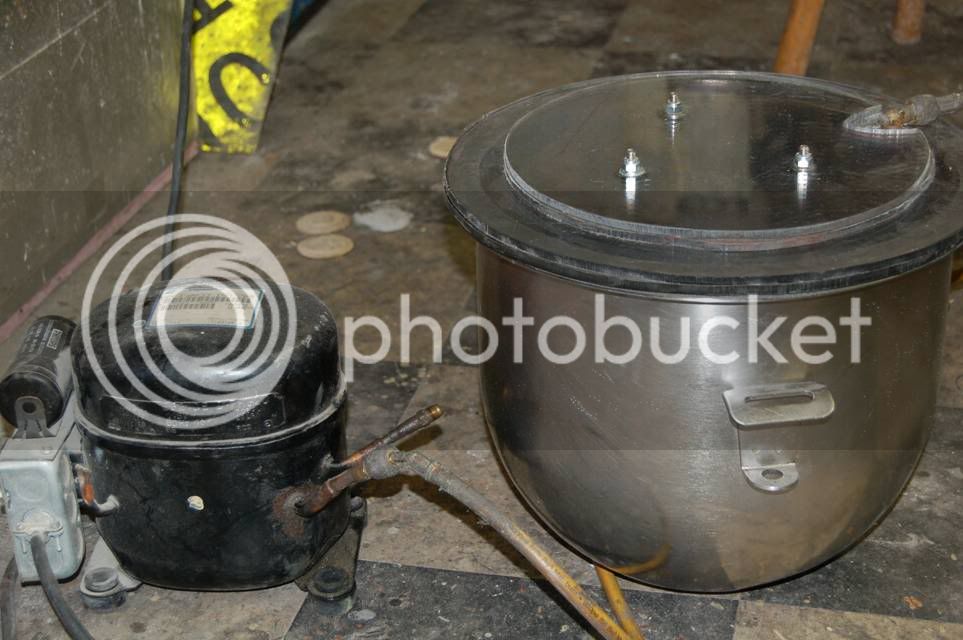hazaramj
Member
Howdy everyone,
I had this crazy idea this morning about a new method to possibly chill beer faster than IC coils.
Vacuum Chilling, hear me out on this one.
Every time you use a pressure cooker you heat the water above its normal boiling point due to above normal atmospheric pressure inside the vessel.
If you remove the pressure regulator a violent boil occurs as the water is de-pressurized. The temperature drops rapidly between 126oC (15bar) to 100 oC.
What if you were to develop a way to reduce the pressure of the boil kettle below ambient?
at 0.5 psi water boils at roughly 80F
4 psi at 150F
8 at 180F
maybe a heavy duty shop vac could be used to drop the pressure?
you would probably still need the IC but this could be an interesting way to drop below 150F rapidly.
Cheers,
Matthew
I had this crazy idea this morning about a new method to possibly chill beer faster than IC coils.
Vacuum Chilling, hear me out on this one.
Every time you use a pressure cooker you heat the water above its normal boiling point due to above normal atmospheric pressure inside the vessel.
If you remove the pressure regulator a violent boil occurs as the water is de-pressurized. The temperature drops rapidly between 126oC (15bar) to 100 oC.
What if you were to develop a way to reduce the pressure of the boil kettle below ambient?
at 0.5 psi water boils at roughly 80F
4 psi at 150F
8 at 180F
maybe a heavy duty shop vac could be used to drop the pressure?
you would probably still need the IC but this could be an interesting way to drop below 150F rapidly.
Cheers,
Matthew



